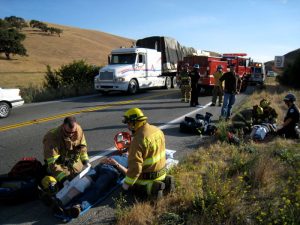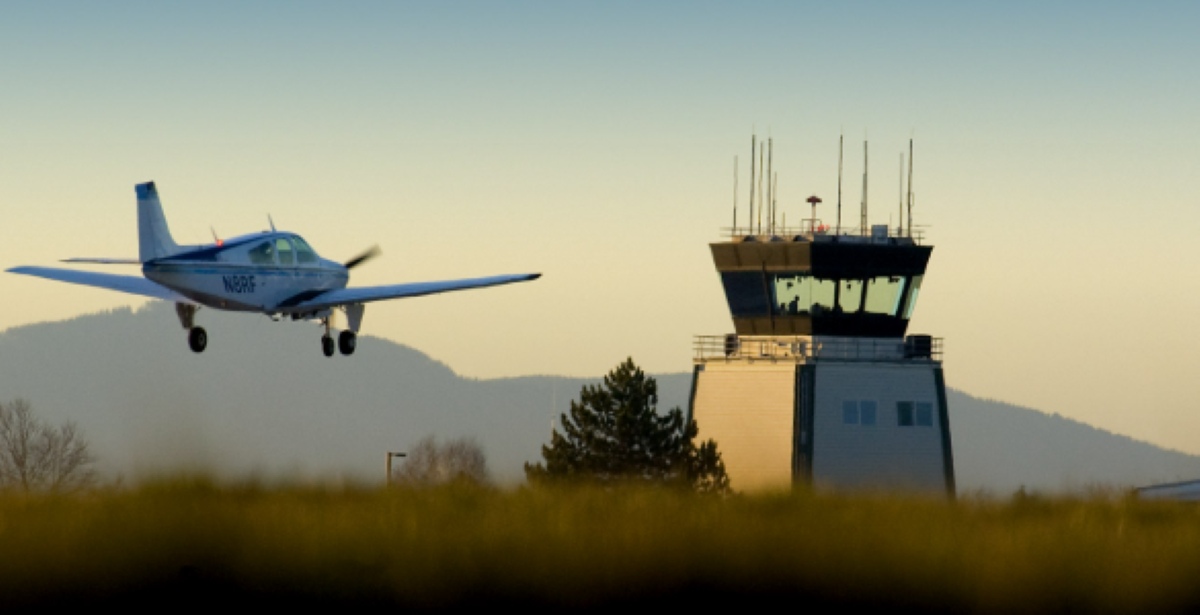 Courtesy of the Port of Portland
Courtesy of the Port of PortlandAirports make significant investments to meet growing demand, respond to changing regulations and policies, keep pace with evolving technology, and accommodate shifting customer needs and travel habits—all while juggling day-to-day operations. Over the past 20 years, those investments have reflected a 33 percent increase in airport passenger traffic (1). The period also saw the maiden flight of the largest civil airliner in the world (2), 21 airline mergers (3), the advent of commercial space operations, advanced air mobility such as drones and other state-of-the-art aircraft, NextGen (Next Generation Air Transportation System) airspace modernization, and a pandemic. One constant throughout these past two decades, however, is that airports have had a partner in the Airport Cooperative Research Program (ACRP).
ACRP’s mission is to provide practical solutions to help the airport industry meet ongoing challenges. Its research covers nearly every topic relevant to the airport industry, including administration and human resources, policy and planning, environment, safety, design, construction, operations, and maintenance. And all its resources are available for free.
The Genesis of ACRP
ACRP was authorized by an act of Congress in 2003 as part of the Vision 100—Century of Aviation Reauthorization Act to carry out applied research on problems shared by airport operators. A memorandum of agreement with the U.S. Department of Transportation (U.S. DOT), FAA, and the National Academies of Sciences, Engineering, and Medicine to establish an initial four-year pilot program went into effect in 2005. ACRP’s first publication—ACRP Report 1: Safety Management Systems for Airports (Volume 1: Overview)—was released in 2007.
These are the nuts and bolts of how the program was established. But what led the airport industry to come together in such a collaborative manner? What kind of research was needed? How would the program operate to ensure the industry’s needs were met in a timely and responsible fashion?
“Before ACRP, there was no effective means for addressing the unique research needs of airport operators,” recalls Tom Menzies, Director of TRB’s Consensus and Advisory Studies Division, who helped launch the program. That led a handful of airport industry leaders to ask Congress to fund a study to explore ways to address this research gap. The 2000 FAA reauthorization directed the U.S. DOT to conduct a formal study of an industry-driven research program, which the agency then contracted with TRB to undertake. TRB formed a committee with a range of expertise and a balance of relevant perspectives. The group met throughout 2002 to discuss program governance and management, project selection criteria, and funding. Initial research needs were also identified. Notes Menzies: “This was critical to justifying the new program—coming up with a set of immediate research needs that no one else was undertaking.”
The study concluded that a national airport cooperative research program would provide lasting benefits to the industry and urged Congress to establish one. Congress authorized the program and directed that it be set up and managed through TRB, recognizing TRB’s already-established and successful model for developing applied, industry-driven research through a cooperative research process. Asked about his involvement in ACRP’s beginnings, Menzies shared: “I’ve managed many studies during my 37 years at TRB, and this is one of my proudest contributions to the transportation industry.”
ACRP’s Early Years
To ensure that the program would stay focused on applied research for airports, the ACRP Oversight Committee—an independent governing board—was formed, with members appointed by the U.S. Secretary of Transportation. A method for soliciting research topics, known as problem statements, was established. The ability for anyone to submit a problem statement is a hallmark of the program. After FAA provided an initial $3 million in 2005 to start the program, ACRP’s annual budget was soon increased to $10 million. Annual funding grew to $15 million for FY 2009 and has remained at that level.
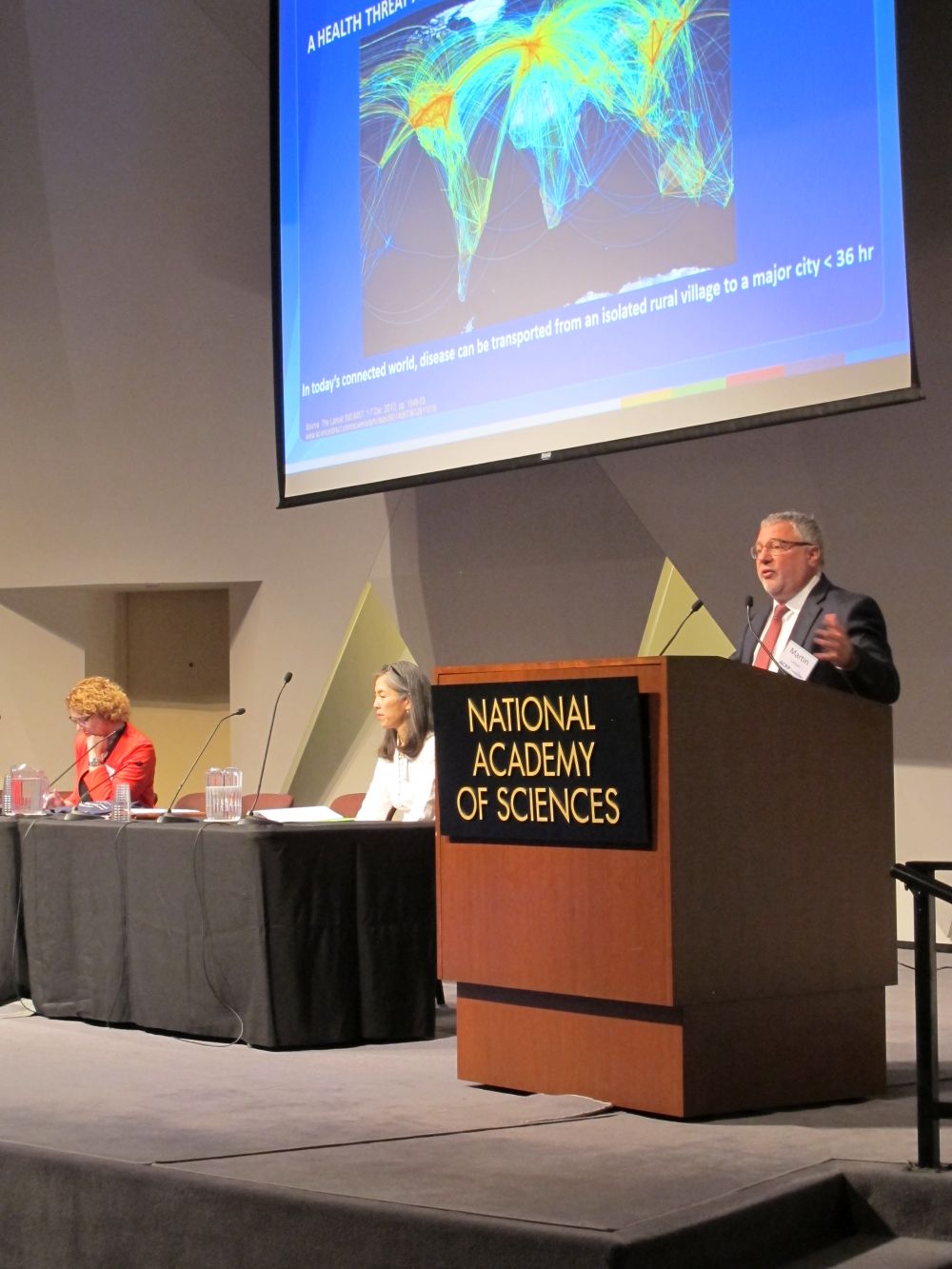
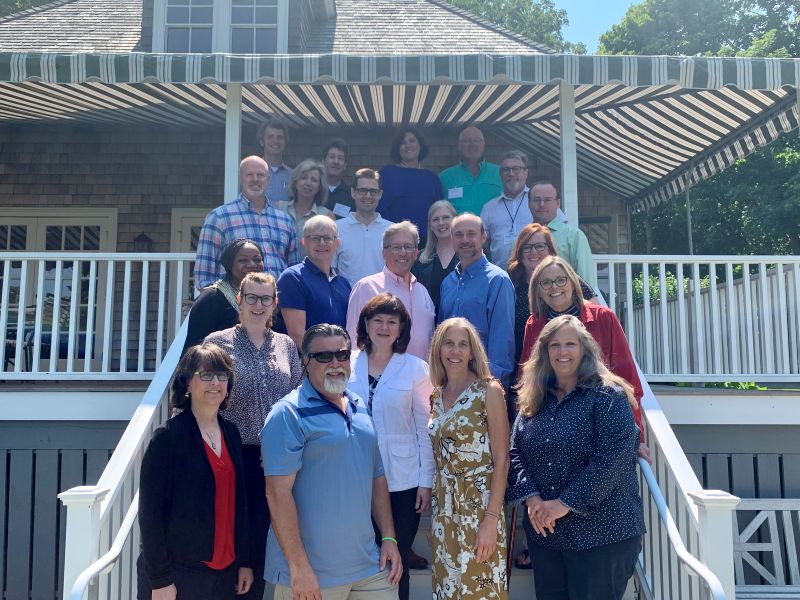
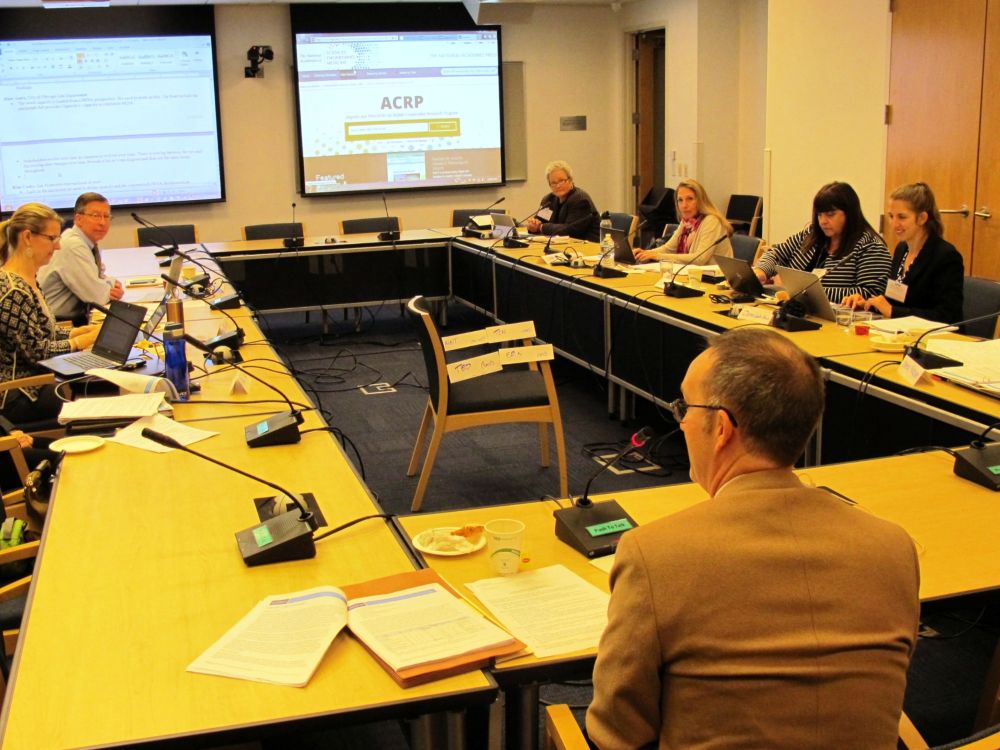
- ACRP’s Insight Events foster information sharing among subject matter experts and practitioners. The first—on the airport’s role in reducing transmission of communicable diseases—was held in March 2018 at the National Academies of Sciences Building in Washington, DC, and featured (left to right) physicians Ansa Jordaan, Julie Morita, and Martin Cetron. (TRB Staff)
- ACRP Oversight Committee members and staff take a break from selecting new research projects during their July 2021 meeting at the National Academies’ former meeting facility in Woods Hole, Massachusetts. (TRB Staff)
- Volunteers on a 2017 ACRP synthesis panel meet with the research contractor to discuss their project. Bringing subject matter experts and practitioners together is one way that ACRP fosters information sharing and research-based practices that benefit airports of all sizes. (TRB Staff)
In 2006, TRB hired Michael Salamone as an ACRP senior program officer. Salamone soon was promoted to the position of program manager. From that time until his death in 2018, he leveraged his airport management experience and industry network to quickly build ACRP into the trusted research program it is today. Many of his insights and contributions are still woven into the fabric of the program, including the ACRP Ambassador Program, which consists of industry volunteers who promote engagement with ACRP. Other contributions include establishing a presence on social media, creating WebResources (websites that provide products on a specific challenge or topic), and developing a format for convening airport practitioners and subject matter experts to discuss emerging and challenging airport issues—known as Insight Events.
The most common topics researched in those early years include the following:
- Airport management and revenue generation,
- Noise,
- Air and water quality,
- Safety management and emergency response,
- Terminal planning and design, and
- Incorporating new technologies.
Practical Benefits from ACRP Research
Jim Crites, former executive director of Airport Operations at Dallas–Fort Worth International Airport (DFW) in Texas, was on the original TRB committee exploring the need for an airport cooperative research program and served as one of the first ACRP Oversight Committee members. He says that many airport issues are complex and involve the engagement and trust of numerous stakeholders. Once the program was underway, he notes, “all of a sudden, ACRP became the go-to source of useful research developed in a collaborative and evidence-based process.”
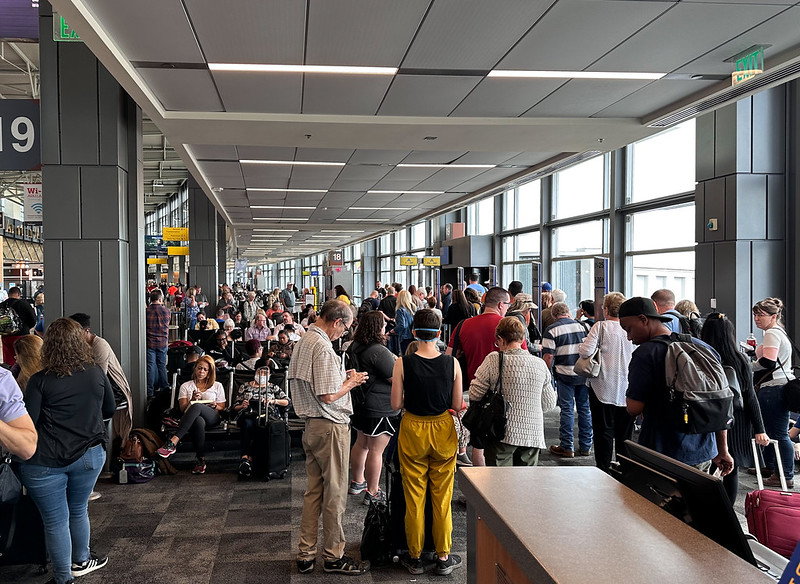 Jonathan Cutrer, Flickr, CC BY-NC 2.0
Jonathan Cutrer, Flickr, CC BY-NC 2.0 “ACRP publications have helped our airport overcome numerous challenges,” says Rohini Kumarage, a planning and development officer at Austin–Bergstrom International Airport in Austin, Texas. In just five years, from 2018 to 2023, the airport saw annual passenger activity grow to 22.1 million, an increase of nearly 40 percent (4). To meet this rapid and unprecedented growth, Kumarage and her team have relied on ACRP products during the design and development stages of major expansion projects. “We’ve incorporated ACRP research into projects ranging from restroom design and baggage handling to passenger wayfinding,” she notes. “ACRP publications are our go-to guides to solve many airport issues.”
While ACRP is known for delivering timely guides, tools, models, and other products, airport industry practitioners take advantage of the program to learn, grow their professional network, and give back to the industry. Kumarage, for example, has been participating in ACRP initiatives since 2016. “My involvement in ACRP, whether on project panels or serving as an ambassador, has been a positive learning experience professionally,” she explains. “I will continue to be a part of ACRP because I believe in the value that the program brings to all airports—large, midsize, and small.”
“We’ve incorporated ACRP research into projects ranging from restroom design and baggage handling to passenger wayfinding.”
–Rohini Kumarage, Planning and Development Officer
Austin–Bergstrom International Airport
Appreciation from a Small Airport
When the public thinks of airports, people typically think of the large commercial-service airports where they board flights for business and vacation travel. Yet the vast majority of airports in the United States have limited or no commercial service. These smaller, typically regional airports play a vital role in the national airport system, from serving as reliever airports that reduce congestion at commercial airports in large metropolitan areas to supporting general aviation activity, such as business travel (5).
Carolyn Motz, former director of Hagerstown Regional Airport in rural Maryland and one of the first ACRP Oversight Committee members, observes that small airports typically have limited staff who must multitask. “Before ACRP, I found myself spending an inordinate amount of time addressing the many challenges associated with operating a small commercial service facility,” she says. “But, once ACRP began publishing its many helpful guides and tools, I and other small airport operators quickly had access to a carefully researched and peer-reviewed library of recommended practices right at our fingertips.” Motz relished serving on the oversight committee. “Providing input on behalf of smaller airports to help shape the program and select relevant research projects was a great honor for me,” she reflects. “It was one of the most fun, worthwhile endeavors I was able to participate in.”
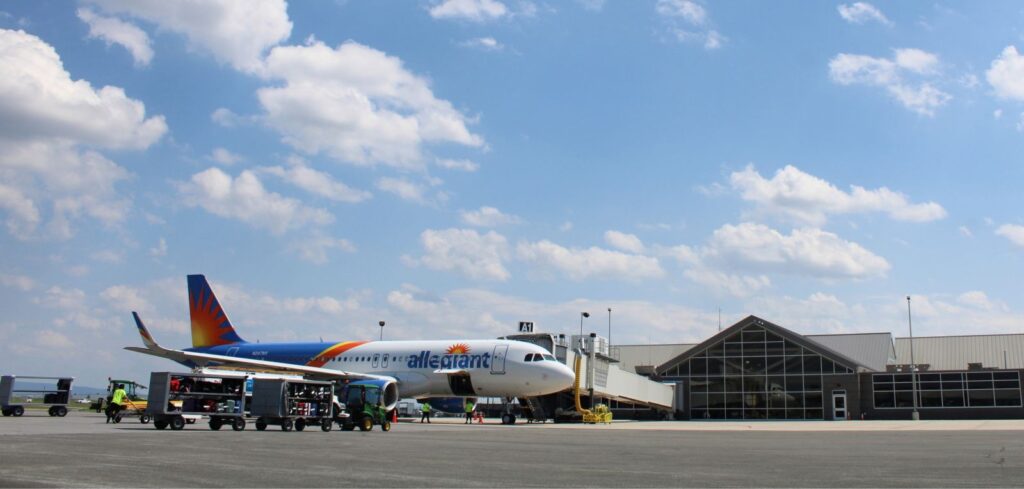 Courtesy of Hagerstown Regional Airport
Courtesy of Hagerstown Regional AirportACRP Today: Making Connections
Consistent with the vision of the ACRP Oversight Committee, the program’s current manager, Marci Greenberger, believes that the following steps are critical for the program to remain relevant:
- Expand the level of industry engagement,
- Ensure that the program tailors research methods and products to provide results quickly and in a multitude of delivery methods, and
- Ensure that practitioners can quickly find needed information.
She provides the example of ACRP’s newly established First Look process. “We heard the industry loud and clear,” recounts Greenberger. “ACRP needed to come up with a way to help airports understand the potential implications of quickly developing issues—issues for which there is no established practice. Our First Look studies answer three questions:
- What is the connection between the issue and airports, including potential challenges and opportunities?
- What is the regulatory and legal context? and
- What future research is needed?”
Greenberger notes that the targeted scopes of First Looks allow them to be completed in six months, ensuring timely access to needed information.
After 20 years of research, ACRP has more than 700 projects in its portfolio. (See Broad Reach, below, for a sampling of research reports.) As a result, Greenberger acknowledges, “it can be hard for practitioners to quickly access the information they are seeking.” To meet this need, ACRP developed curated lists of related products called ACRP Research Collections. There are currently 13 collections—easily accessed from the ACRP webpage. Topics include Airports 101 (designed to help those new to the airport industry), General Aviation Airports, Staffing and Workforce, and Technology and Innovation. “As new research is completed,” says Greenberger, “we will add new products and create new Research Collections.”
It is essential that the program establishes connections with individuals that go beyond just accessing research. ACRP relies on volunteers to submit problem statements (e.g., research ideas), serve on project panels (every research project has a panel of volunteer practitioners to guide the research), and respond to requests for information from the program’s research contractors.
“All stakeholders are trying to do what’s best, and they typically want to achieve mutually beneficial goals,” explains Crites. “ACRP is the only program that has that capacity to address whatever issues the industry will be facing. It’s the one place to bring everyone together. Relationships can be made—and that’s the secret sauce of ACRP’s research: It’s not only built on evidence but also on collaboration.”
Looking to the Future
The FAA forecasts passenger traffic to increase more than 62 percent from 2024 to 2044 (6). In the next few years, more than $151 billion will be required to meet airport infrastructure needs (7). ACRP will continue to offer guides, tools, and other resources to help ensure that investments are made judiciously. In addition, airports also recognize that they have a role in the fabric of their communities—and that they have an opportunity and a responsibility to make a positive impact, particularly with respect to societal challenges. Airports are turning to ACRP for help in addressing those challenges. In 2018, for example, ACRP held an Insight Event on the role of airports in reducing the transmission of communicable diseases. ACRP has also provided guides for airports to combat human trafficking and to humanely respond to individuals at their facilities who are experiencing homelessness. [See At the Airport with Nowhere to Go in TR News 353 (Spring 2025).]
Airport sustainability and efficiency is another area where ACRP research has benefited operations and cut costs. During Crites’ tenure, for example, “DFW became the largest carbon-neutral airport in the world, and we did that profitably,” he says, pointing to ACRP studies as a key factor. “This research helped DFW reduce cost, grow revenue, improve operational efficiency, and enhance customer service,” he notes, citing such practices adopted at the airport as waste diversion, sharing extra food from concessionaires with those in need, and energy-efficiency practices and projects.
Learn how ACRP studies helped DFW Airport improve operational efficiency.
“The list of benefits from engaging with ACRP goes on and on,” Crites continues. “Everything from getting support for investing in a new, more efficient in-line baggage screening system to effectively communicating with local communities about the things airports are doing to benefit them.” By the time he left DFW, Crites had “three rows of ACRP publications” on his office bookshelf and he continues to rely on the program’s growing list of resources in his consulting practice.
What issues will airports face over the next 20 years? While there is no way to know for certain, ACRP aims to be there to help.
Broad Reach
 Courtesy of the Port Authority of New York and New Jersey
Courtesy of the Port Authority of New York and New JerseyACRP has conducted more than 700 studies and developed practical tools and guidance on challenges as varied as airport amenities, energy resilience, workforce development, and wildlife hazard management. Here is a sample list of research reports:
- Guidebook for Managing Small Airports, Second Edition (2019)
- Impacts of Aging Travelers on Airports (2014)
- Improving the Airport Customer Experience (2016)
- Guidance for Usage of Permeable Pavement at Airports (2017)
- Improving Intelligibility of Airport Terminal Public Address Systems (2017)
- Toolkits and Resource Library for Airports and Unmanned Aircraft Systems (2020)
- Planning and Design of Airport Terminal Restrooms and Ancillary Spaces (2021)
- Airside Operations Safety: Understanding the Effects of Human Factors (2022)
- Assessing Airport Programs for Travelers with Disabilities and Older Adults (2023)
- Developing an Airport Program to Address Human Trafficking: A Guide (2023)
- Digital Marketing to Enhance Customer Experience and Increase Airport Revenue (2023)
- PFAS Management at Airports: A Guide (2024)

